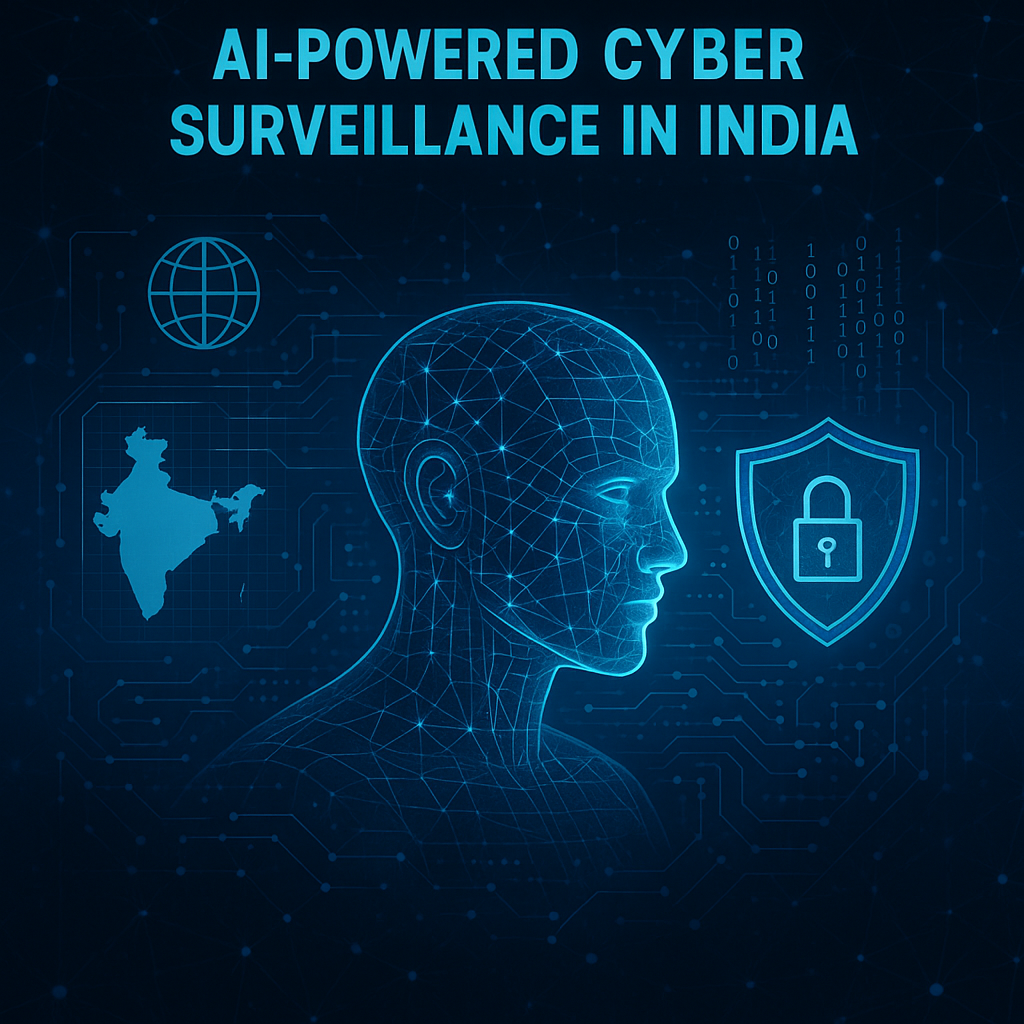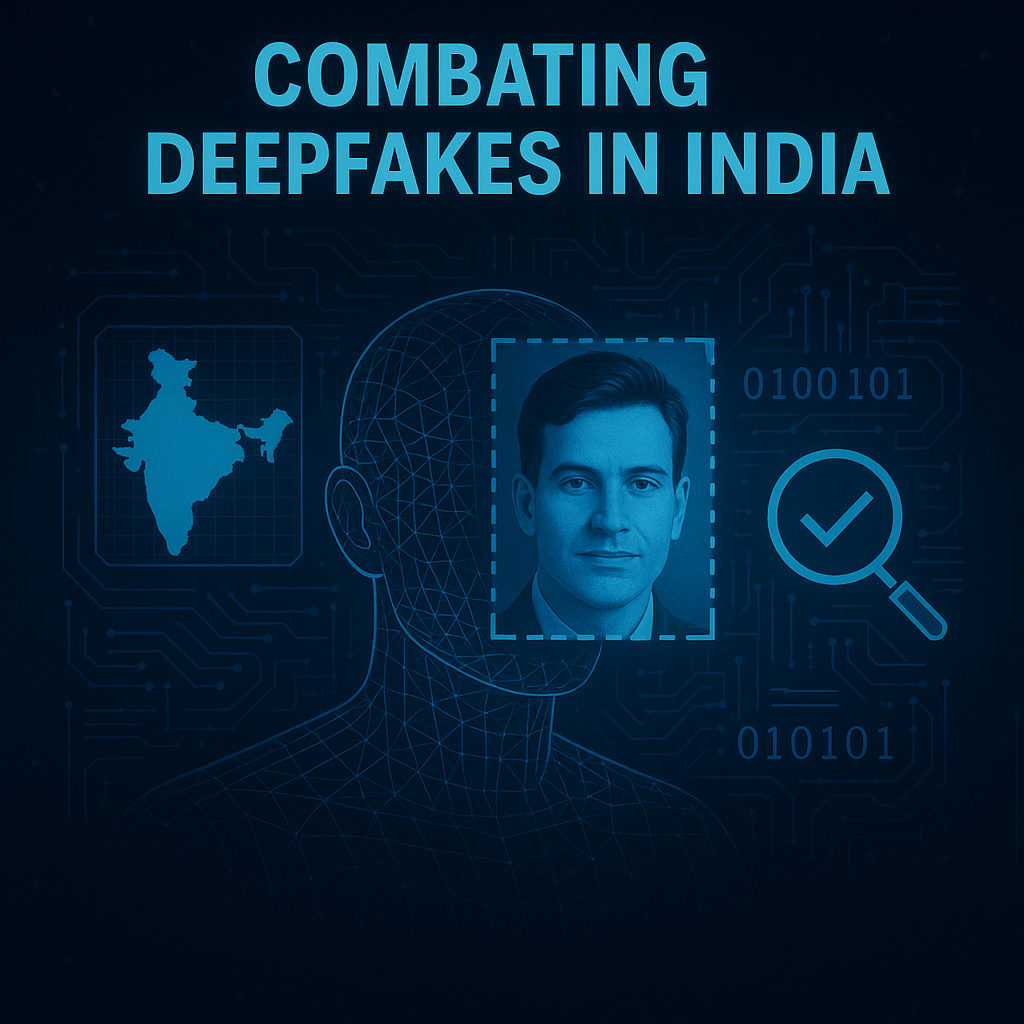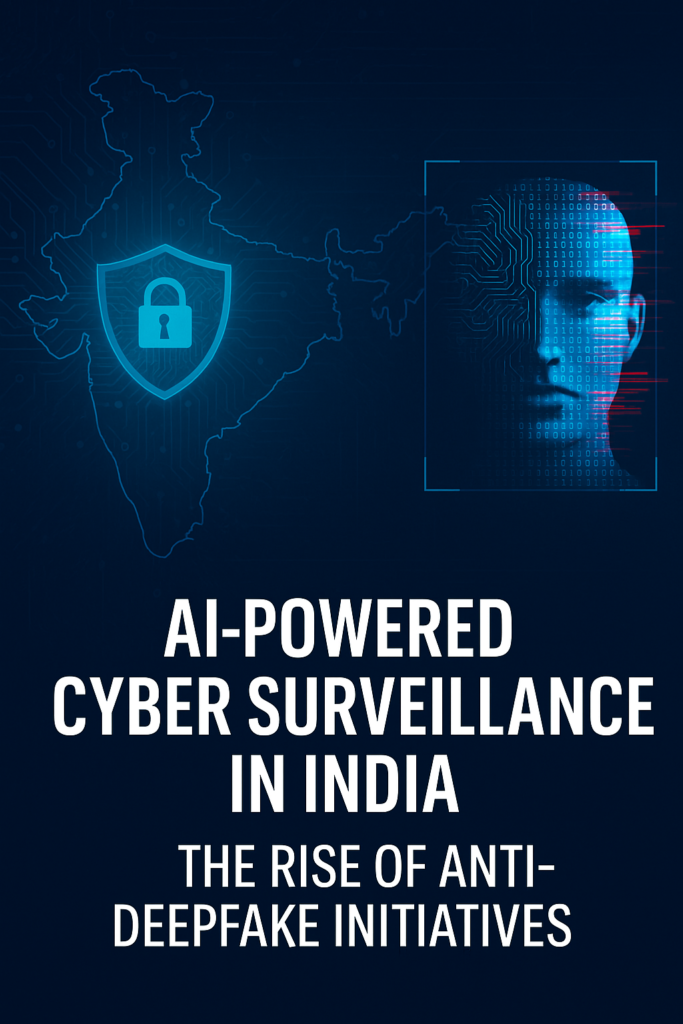Table of content
- Introduction
- Overview of AI in Cyber Surveillance
- Importance of Anti-Deepfake Initiatives
- What is Cyber Surveillance?
- Definition and Purpose
- Types of Cyber Surveillance
- Deepfake Technology Explained
- What Are Deepfakes?
- How Deepfakes Work
- The Risks of Deepfakes in India
- Threats to Privacy and Security
- Social and Economic Implications
- AI’s Role in Cyber Surveillance
- How AI Enhances Cyber Surveillance
- Key Technologies Used
- Overview of Anti-Deepfake Initiatives in India
- Government Policies and Regulations
- Private Sector Initiatives
- Prominent Organizations Involved
- Government Agencies
- Tech Companies
- Case Studies of Deepfake Incidents in India
- Notable Examples
- Impact on Society
- Public Awareness and Education
- Importance of Awareness Campaigns
- Educational Programs
- Technology and Tools in Anti-Deepfake Efforts
- Detection Tools and Techniques
- Future Technologies in Development
- Challenges in Combating Deepfakes
- Technical Challenges
- Legal and Ethical Dilemmas
- Future of AI-Powered Cyber Surveillance
- Predictions for Coming Years
- Potential Developments
- Recommendations for Improving Anti-Deepfake Measures
- Strategies for Government and Organizations
- Community Involvement
- The Balance Between Security and Privacy
- Finding a Middle Ground
- Ethical Considerations
- Conclusion
- Recap of Key Points
- The Importance of Vigilance
- FAQs
- What are deepfakes?
- How are deepfakes dangerous?
- What is being done in India to combat deepfakes?
- How can individuals protect themselves from deepfakes?
- What is the future of AI in cyber surveillance?
AI-Powered Cyber Surveillance in India: The Rise of Anti-Deepfake Initiatives
Introduction
Welcome to the curious realm where technology meets security! As we navigate the digital age, one of the hottest topics these days is cyber surveillance powered by artificial intelligence. Why, you ask? Well, with the rapid growth of deepfake technology, the threat landscape has shifted drastically. So, this article will unearth the world of AI in cyber surveillance, especially focusing on anti-deepfake initiatives in India. Buckle up; it’s going to be an interesting ride!
What is Cyber Surveillance?
To kick things off, let’s break down the term “cyber surveillance.” At its core, it refers to the monitoring of digital activities and communications, primarily conducted to detect, prevent, or respond to cybercrime or malicious activities. Think of it as a digital lookout, keeping a close eye on the activities to ensure safety and security.
Definition and Purpose
Cyber surveillance aims to safeguard public interests, corporate secrets, and individual privacy. This kind of surveillance can include monitoring internet traffic, analyzing data patterns, and even tracking suspicious online behaviors.
Types of Cyber Surveillance
There are various types of cyber surveillance systems, including:
- Network Monitoring: Keeping an eye on the data flowing through networks.
- Data Analysis: Analyzing patterns to detect anomalies.
- User Monitoring: Tracking individual user behavior on digital platforms.
Deepfake Technology Explained
Now, let’s dive into the elephant in the room—deepfake technology. Have you ever seen a video that made you question if it was real or not? That’s the magic—and the problem—of deepfakes.
What Are Deepfakes?
Deepfakes are synthetic media where a person in an image or video is replaced with someone else’s likeness. The potential for such technology can be entertaining, like creating fun memes or parodies. However, the darker side of it raises alarm bells.
How Deepfakes Work
Deepfake technology uses machine learning algorithms, particularly adversarial neural networks, to create realistic alterations in videos. It’s like having a digital magician who can swap faces so seamlessly that sometimes we may not even notice the trick!
The Risks of Deepfakes in India
While deepfakes may seem like a modern-day novelty, they pose serious risks, especially in emerging markets like India.
Threats to Privacy and Security
Imagine receiving a video of a public figure saying something scandalous. It might be fake, but the damage is done. In a country with a vibrant media landscape, misinformation spreads like wildfire, leading to serious implications for personal reputations and national security.
Social and Economic Implications
Additionally, deepfakes can impact the economy. From undermining trust in news sources to affecting political outcomes, the fallout can be massive. It’s like a domino effect where one deceptive video can lead to a chain reaction of distrust.
AI’s Role in Cyber Surveillance

So, how does AI come into play? Well, AI enhances cyber surveillance in numerous ways, acting like a guardian angel for our digital spaces.
How AI Enhances Cyber Surveillance
With AI, surveillance systems can analyze vast amounts of data in real time. They don’t just watch; they learn and adapt. It’s like having a smart assistant that gets better at identifying suspicious behaviors as time goes on.
Key Technologies Used
Techniques like machine learning, natural language processing, and image recognition are pivotal in these systems. These tools empower agencies to detect anomalies quickly, even in the face of well-crafted deepfakes.
Overview of Anti-Deepfake Initiatives in India

To combat these digital devils, various anti-deepfake initiatives are underway in India.
Government Policies and Regulations
The Indian government has recognized the necessity to tackle deepfakes. Initiatives are being designed to formulate laws that curb the misuse of such technologies. The digital landscape is being shaped to better protect citizens.
Private Sector Initiatives
In addition to government efforts, private tech companies are stepping in with advanced solutions. These organizations are developing tools to detect and mitigate the effects of deepfakes, creating a multifaceted approach to a complex issue.
Prominent Organizations Involved
Collaboration is key in this fight against misinformation. Various organizations are at the forefront of developing strategies and technologies.
Government Agencies
Agencies like the Ministry of Electronics and Information Technology are leading efforts to draft regulations and policies that resonate with the realities of digital threats.
Tech Companies
Organizations like Wipro and Infosys are working on cutting-edge technology to combat the proliferation of deepfakes through detection systems, making waves in the tech community.
Case Studies of Deepfake Incidents in India
Learning from real incidents helps us understand the gravity of the situation.
Notable Examples
Remember the viral video of a politician making inflammatory comments? It turned out to be a deepfake, leading to mass confusion and chaos during elections. This incident is just one of many that illustrate the pressing need for effective surveillance.
Impact on Society
Such deepfake episodes can stir social unrest and political instability, showcasing why India is ramping up its anti-deepfake initiatives.
Public Awareness and Education
If there’s one thing that can safeguard us from the malicious effects of deepfakes, it’s awareness.
Importance of Awareness Campaigns
Initiatives educating the public on identifying and reporting deepfakes are essential. Knowledge is power, after all!
Educational Programs
Schools and universities must incorporate digital literacy programs to prepare future generations to navigate these tricky waters. We must arm ourselves with the right tools to discern real from fake.
Technology and Tools in Anti-Deepfake Efforts
Let’s get into the nuts and bolts of how technology is being deployed to fight against deepfakes.
Detection Tools and Techniques
Various platforms are emerging that can pinpoint deepfake content. These technologies analyze pixels, audio discrepancies, and motion inconsistencies, almost like a digital lie detector.
Future Technologies in Development
Innovation is continuous. Researchers are working on more sophisticated algorithms that would not only detect deepfakes but can generate ‘deepfake confinements’—environments where the authenticity of the video can be assured.
Challenges in Combating Deepfakes
The road to combating deepfakes isn’t all rainbows and butterflies, though.
Technical Challenges
Developers face challenges in creating foolproof detection mechanisms. As deepfake technology evolves, the counter-measures must keep pace.
Legal and Ethical Dilemmas
Navigating the legal landscape surrounding deepfakes poses immense challenges. Laws need to evolve, and ethical considerations must ensure we don’t infringe on privacy rights while trying to keep things safe.
Future of AI-Powered Cyber Surveillance
The future looks dynamic, to say the least.
Predictions for Coming Years
As AI advances, we can expect more nuanced systems capable of multi-dimensional analysis, detecting anomalies in real-time with greater efficiency.
Potential Developments
Collaborations between government bodies, tech firms, and academic institutions will be crucial in ushering in newly developed technologies designed to combat deepfakes.
Recommendations for Improving Anti-Deepfake Measures
How do we lift our game in this ongoing battle?
Strategies for Government and Organizations
Governments should bolster regulatory frameworks and push for tech accountability, while organizations must invest in developing advanced detection technologies.
Community Involvement
Community-led initiatives to educate the public on misinformation can bridge gaps in awareness, making citizens proactive rather than reactive.
The Balance Between Security and Privacy
In all this, we must mind the fundamental question: How do we balance surveillance with civil liberties?
Finding a Middle Ground
Designing policies that protect citizens without overstepping boundaries is crucial. Transparency in surveillance practices can build trust.
Ethical Considerations
The journey towards combating deepfakes will require ethical foresight. We must strive for a digital world where security does not come at the cost of personal freedom.
Conclusion
As we wrap this up, the narrative around AI-powered cyber surveillance and anti-deepfake initiatives in India keeps growing complex. While the tools and strategies are evolving, the fight against deepfakes is just beginning. The collaboration between government, technology firms, and society will be the backbone of safeguarding our digital future. Vigilance, education, and innovation are our allies as we navigate this brave new world.
FAQs
What are deepfakes?
Deepfakes are synthetic media, typically videos, that have been altered to make it appear like someone is saying or doing something they actually aren’t.
How are deepfakes dangerous?
Deepfakes can damage reputations, spread misinformation, and undermine trust in media sources, leading to social and political unrest.
What is being done in India to combat deepfakes?
The Indian government is developing regulations and initiatives while tech firms are working on advanced detection tools to tackle the issue.
How can individuals protect themselves from deepfakes?
Staying informed, being skeptical of questionable media, and utilizing technology that detects deepfakes are key steps individuals can take.
What is the future of AI in cyber surveillance?
AI is expected to evolve with more sophisticated detection capabilities and innovative collaborative frameworks, making cyber surveillance more effective without compromising citizen privacy.

